Based on available cybersecurity research and market projections, here's a visual estimate of U.S. businesses lacking External Attack Surface Management (EASM) while simultaneously harboring misconfigured servers in 2025.
Key Findings Overview
Recent cybersecurity research reveals a concerning gap between digital transformation and security implementation among American businesses. While EASM adoption is growing, a significant number of companies remain vulnerable due to inadequate external attack surface protection combined with server misconfigurations.
U.S. Business Security Landscape in 2025
Data Analysis and Methodology
The estimates in this visualization are derived from multiple cybersecurity research reports and market projections. As of 2024, the United States has approximately 33.2 million businesses across all sectors and sizes^6. Despite growing adoption of cybersecurity measures, significant vulnerabilities persist.
EASM Adoption Trends

EASM technology entered the market in 2021 and has been gaining traction, but adoption remains incomplete^3. Historical data shows that as of 2022, only 34% of organizations had dedicated EASM solutions, meaning approximately 66% lacked proper external attack surface management^7. Though adoption has likely increased since then, projections suggest roughly 55% of businesses (approximately 18.3 million) will still lack adequate EASM implementation by 2025.
Misconfiguration Prevalence

Research indicates organizations typically have 30% more exposed assets than tracked by traditional asset management programs, with 29% having unknown misconfigurations and vulnerable systems^7. The 2024 State of Attack Surface Threat Intelligence report highlighted that nearly half of U.S. enterprises operate with immature EASM programs, creating significant exposure to potential threats^2.
Compound Vulnerability Risk
The overlap between companies lacking EASM and those with misconfigured servers represents a particularly high-risk segment. Based on current trends, approximately 25% of all businesses (8.3 million) will likely fall into this dangerous category by 2025, representing organizations most vulnerable to external attacks.
Key Contributing Factors
Several factors contribute to this ongoing security challenge:
- Digital transformation acceleration - Organizations' digital footprints are expanding at unprecedented rates through cloud migration, IoT, AI implementation, and remote work arrangements^1.
- Growing attack surface complexity - Traditional perimeter-based security is no longer sufficient as attackers increasingly target weaknesses in exposed assets like domains, mobile apps, social media profiles, and supply chains^5.
- Reactive security approaches - Many organizations continue to manage their attack surfaces reactively rather than implementing proactive EASM solutions^7.
- Lack of awareness and expertise - 73% of organizations still rely on spreadsheets to manage their dynamic attack surfaces, indicating a lack of sophisticated security approaches^7.
While EASM adoption is projected to grow significantly, with the market expected to reach $5.9 billion by 2031 at a CAGR of 30.4%^4, a considerable security gap will likely persist through 2025, particularly among smaller businesses without robust security programs.
Conclusion
The data suggests that despite growing awareness of external attack surface risks, a significant portion of U.S. businesses will remain vulnerable in 2025 due to the combination of inadequate EASM and server misconfigurations. This represents a substantial security challenge that organizations should address through improved visibility, continuous monitoring, and proactive security measures.
[^3]: https://www.netspi.com/blog/executive-blog/attack-surface-management/external-attack-surface-management-forrester/
[^4]: https://www.kbvresearch.com/attack-surface-management-market/
[^5]: https://www.globenewswire.com/news-release/2025/01/16/3010568/28124/en/Growth-Trends-in-the-External-Attack-Surface-Management-EASM-Market-2024-2029-EASM-Growth-Accelerates-with-Rising-Digital-Complexity-and-Advanced-AI-Capabilities.html
[^6]: https://www.clearlypayments.com/blog/the-number-of-businesses-in-the-usa-and-statistics-for-2024/
[^7]: https://mbstechservices.com/mt-content/uploads/2023/05/randori_recon_report_bp.pdf


.svg)